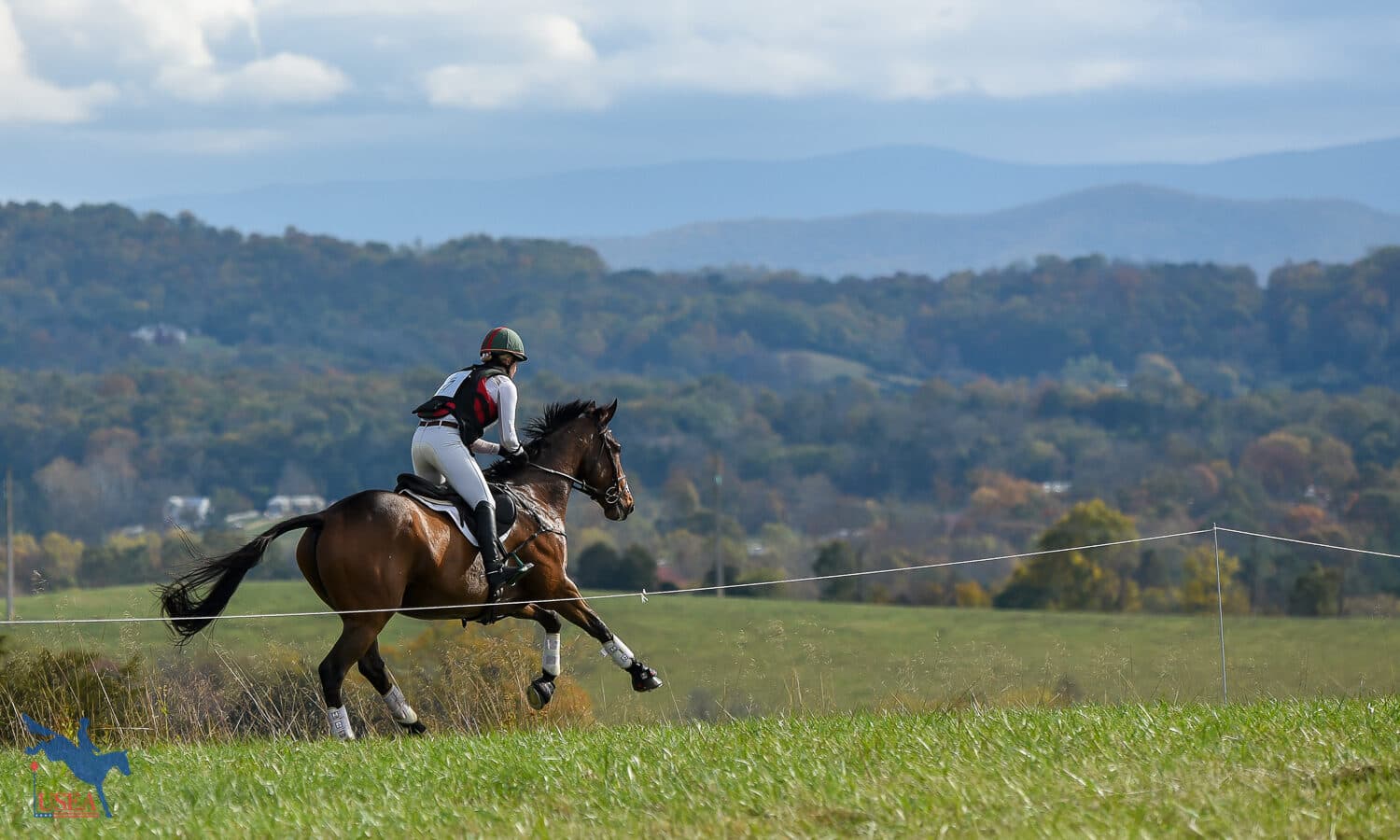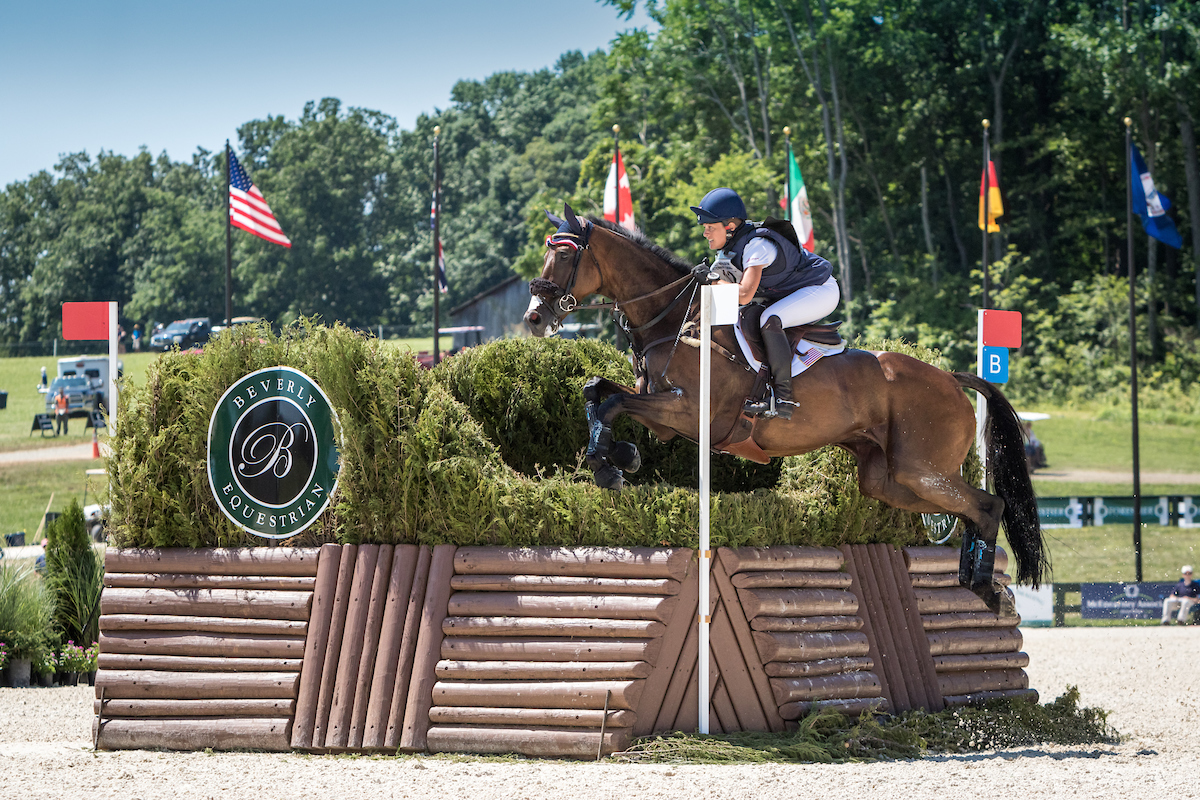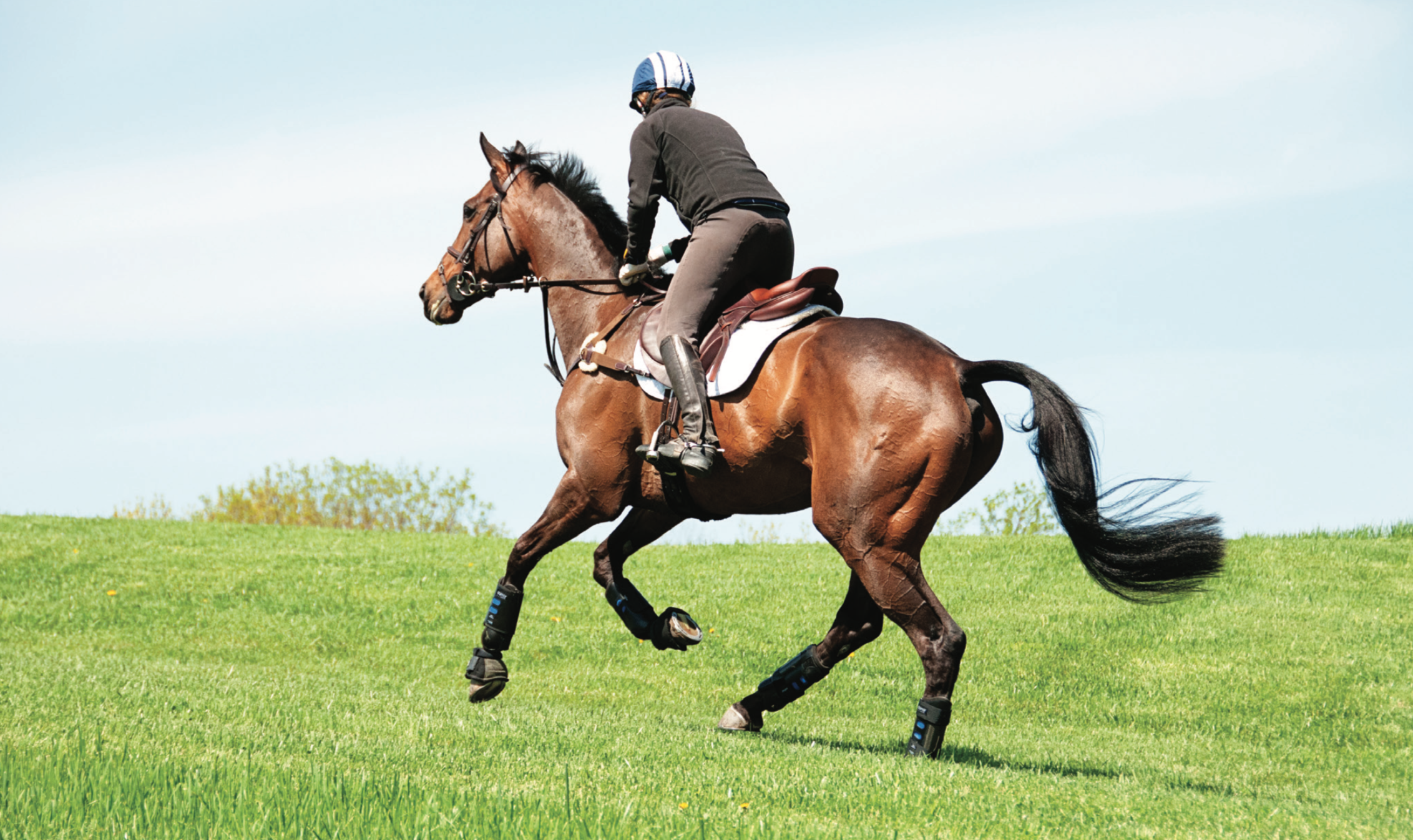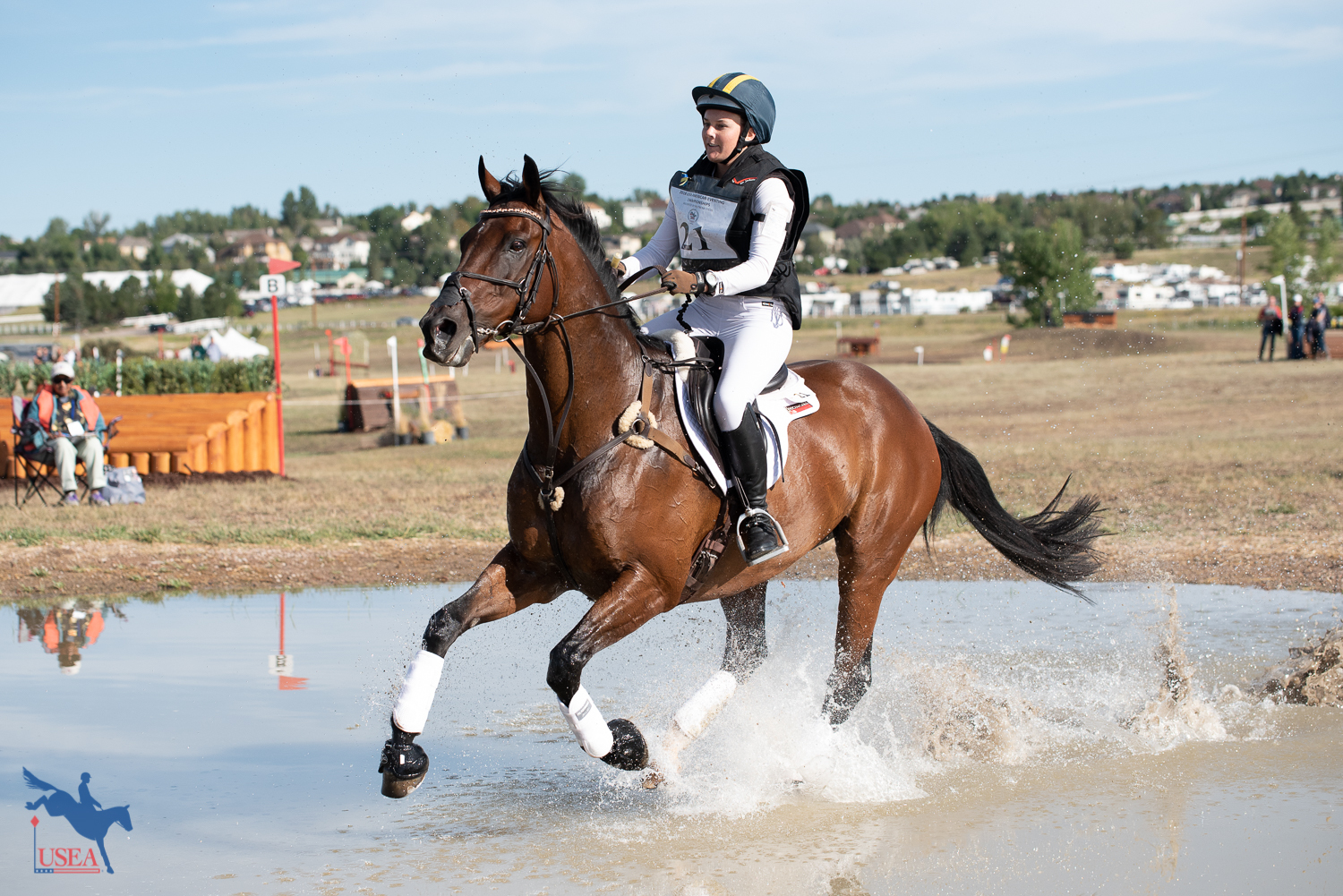The Art of Conditioning an Event Horse

This article originally appeared in the July/August 2017 issue of Eventing USA magazine.
The ins and outs of properly conditioning an event horse rely heavily on two things: quality of daily work and a tailored working schedule up to day one of your intended competition. When looking ahead to what an appropriate schedule leading up to a fall or spring CCI, it is important to note the base level of your horse’s fitness, which often stems from both its breeding and the preceding events that he has run.
First and foremost, a plan working back six to eight weeks from the competition incorporating some combination of trots, canters, and horse trials is imperative. Dr. Susan Johns, DVM, CVA, and Senior Associate at Virginia Equine Imaging in Middleburg, Va., emphasizes that “fitness [conditioning] is most effective when individualized to the horse’s intended use and the rider’s performance goals.”
For Lynn Symansky, U.S. Equestrian Team member and CCI4* rider, the more blood in a horse, the better. She has taken two off-the-track Thoroughbreds, No It ‘Tissant [Fergus] and her current mount Donner, up to the CCI4* level, (both who have earned the title of “Best Conditioned Horse” at the Kentucky Three-Day Event.) She experienced the gray area that was the shift between the traditional long format events with roads and tracks and steeplechase into the current day modified format.

At the time, it seemed that most people had a relatively competent grasp on getting a horse fit for the long format, but once the first short format CCI was on the calendar, it proved to be a time of trial and error for many. At her first short format CCI with Fergus, Symansky tried to recreate a long format warm-up. “I ended up doing too much [warm up] with my horse. He was too tired and ended up colicking halfway through,” explained Symansky. Today, she has found that an easy trot and canter in the morning before cross-country at a CCI is sufficient.
The level of fitness that your horse is at affects its skeletal, respiratory, muscular, and cardiovascular systems. “Fitness increases a horse’s ability to perform specific tasks and reduces the likelihood of injury or health related issues,” explained Dr. Johns. The specific event you are targeting plays a role in those choices – venues like the Virginia Horse Center, Bromont, Fair Hill, and Ocala all vary significantly in the level of fitness your horse needs to have before leaving the start box on cross-country day. Riders should look to aim for the event that best suits their horse's needs and experience.
“The important thing now – I don’t know statistically if it’s true – but because riders are not conditioning their horse for a long format, I find horses don’t have as much base fitness, so the horses are more likely to break at the upper levels,” said Symansky. “I think it’s a mistake for people to think ‘okay, we’re not in a long format anymore so you don’t need to do quite as much.”

In terms of getting horses fit for the CCI short format events that we see today, it is extremely beneficial to start building them up from the beginning. Doing long trots and walks peppered with shorter canter stints generally yields positive results. To build the base that is so crucial to the longevity and success of upper level horses, we look to the lower level horses that are running at the Novice and Training levels.
Horses at the Novice level will generally trot hills and when in a working program will gain fitness in their day-to-day work as well. Jump schools that are done with fewer walk breaks and more repetitive exercises are effective in getting their heart rate up and their lungs working harder.
Training level horses will often do some slow cantering on terrain paired with a schedule consisting of regular cross-country schooling days and trot sets. “It’s more the quality of the work you’re doing that makes the biggest difference,” said Symansky. “If you’re just out there flatting for 30 minutes, but 15 minutes of it is walk, you aren’t really doing much for their fitness.”

The difference in cardiovascular fitness and physical fitness also plays a role in what your horse’s schedule might look like leading up to a CCI. Every horse is different and subsequently requires a different amount of fitness. Warmbloods generally have a harder time with hot weather or breathing and must do more fitness work to combat that. Thoroughbreds naturally have a base level of fitness that they carry with them.
Likewise to humans, the likelihood of injury and health concerns is reduced when horses are physically fit. “The onset of fatigue in horses is recognized by changes in behavior or coordination, body temperatures, heart and respiration rates, and overall physical appearance,” said Dr. Johns. “If horses lack sufficient cardiovascular fitness and strength, they are at greater risk of injury even at the lower levels.” For some horses, free swimming or aqua treads are an option when sidelined with a small injury, but those with bad backs or feet should use caution as not only are their bodies not accustomed to being in that much water, but the different muscles that are worked need their own base fitness accounted for as well.
Skipping a gallop with a Warmblood when closing in on a spring or fall CCI can be detrimental to your horse’s long-term health and success. By the time you are down to your final three prep events (with the intention of having them peak at a CCI), missing just one or two gallops would potentially put you in a lot of trouble.
“Ligaments, tendons, and bones provide the framework for a horse’s movement,” said Dr. Johns. “Fitness can improve the ability of the bone to handle the stress of movement. However, excessive overload [particularly on an unfit horse] can overwhelm the capacity of the bone to handle stress resulting in injury to the supporting structures.”

On the other end of the spectrum, there is a concern for getting your horse too fit. For Symansky and a fit Thoroughbred like Donner, (who was too fit for his first two trips around the Kentucky Three-Day Event,) she has done less fitness with him each subsequent year at the four-star level and instead focuses on hill work, while always being wary of the footing. “If exercise bouts are too repetitious or practiced too frequently, horses may display mental dullness and a decline in optimal performance,” said Dr. Johns.
Today, we see many horses at the top of the sport that don’t have an exceptionally high percentage of blood, but are able to compete thanks to the short format. Needless to say, with the inevitability of injuries popping up at inconvenient times, being able to skip a gallop if you’re sitting on a Thoroughbred does have its advantages.
Overall, in the U.S. it can be difficult to find the ideal land to work with that is both accessible and with good footing. We are not all blessed with acres upon acres of open hilly land and areas to trot on, but proper fitness work for eventing horses is a corner that cannot be cut.
Did you enjoy this article? Want to receive Eventing USA straight to your mailbox? Members receive Eventing USA as part of their USEA Membership or you can purchase individual issues from the USEA Shop.














